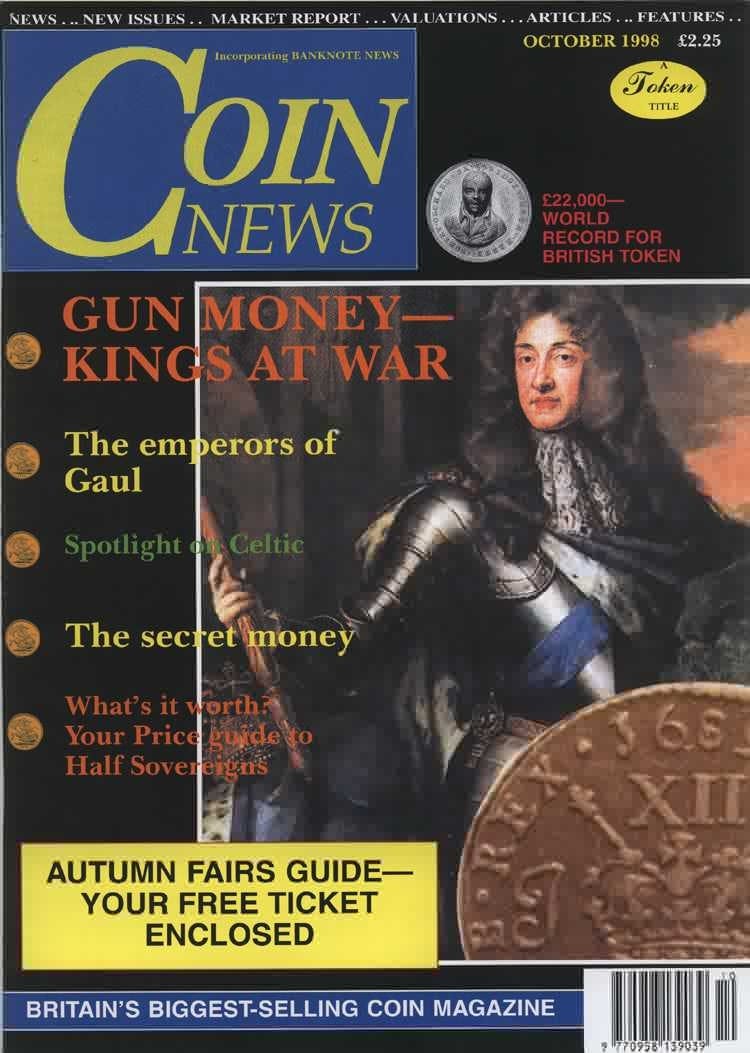THE EURO IS COMING
Volume 35, Number 10, October 1998
The United Kingdom may of decided to opt out of the European single currency for the foreseeable future, but can we ignore the Euro altogether? Seemingly not, for there are grave implications for anyone doing business with Europe. This point is being made forcibly by the government which has launched a television advertising campaign which says, in effect, that we ignore the Euro at our peril. Already many businesses are gearing up to price their goods and services in Euros, the better to deal with their trading partners on the continent, and now the banks are promising to offer accounts in Euro currency. We in the numismatic world, are already feeling the effect of the Euro, with a number of commemorative issues, notably from the Pobjoy Mint and the Netherlands Mint. The French Mint at Pessac, however, has had the honour of striking the first Euro Coins intended for general circulation. Between now and January 2002 the mints of those EC countries which have signed up for the common currency will be working flat out to produce an estimated 13 billion notes and 50 billion coins. Production at Pessac had to be halted, however, when it was discovered that the sizes and weights of the 10 and 50 cents coins were to close for comfort, or at least for the blind and partially sighted to be able to distinguish them readily. The original batch of 9 million 10c coins have had to be scrapped (at a cost of £200,000), while the 50c is being redesigned to increase its weight and thickness. Presumably similar radical changes will be adopted in the other Euro countries; not a good omen for the most momentous change in the entire history of numismatics. Other problems are looming on the horizon. The design of the Euro banknotes has been severely criticised because the bridges depicted on them, supposedly anonymous, have been identified as predominantly French – so it’s back to the drawing board to eliminate features which might link them to a particular country. The theft of a high – security device intended to apply the hologram to the banknotes, somewhere between Paris and Munich last may, is further cause for concern. Now that the French have allegedly ironed out all the snags, production at the other Euro mints is getting under way. The coins will have identical reverses, but each country will be adopting distinctive obverses which reflect individual national identity: portraits of reigning monarchs, national emblems and landmarks, but all within a circle bearing the five pointed stars of the European community. There will be a six – month period in which the obsolescent currency will continue alongside the Euro. This will result in stamps, for example, inscribed in dual currencies, but it is unlikely to have a similar effect on numismatics. Nevertheless, an interesting time lies ahead, whatever the outcome.
Order Back Issue
You can order this item as a back issue, simply click the button below to add it to your shopping basket.

